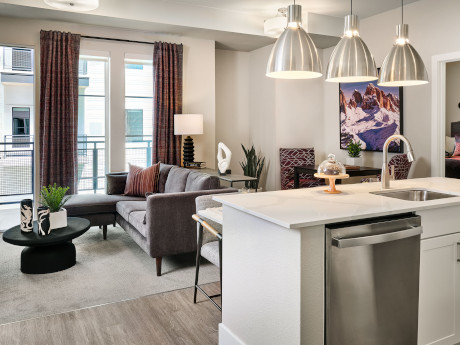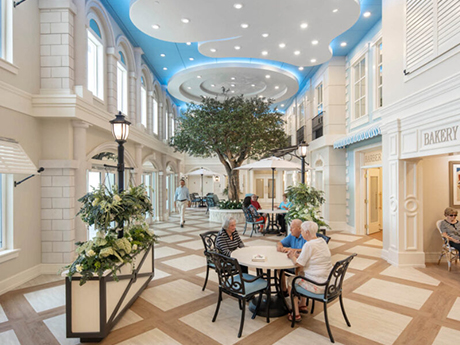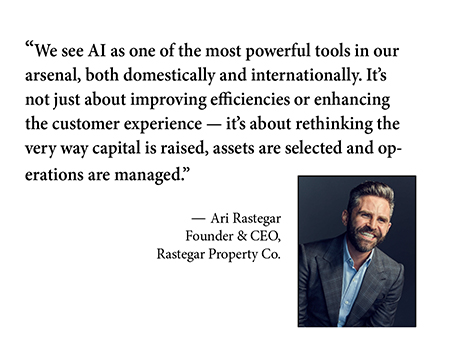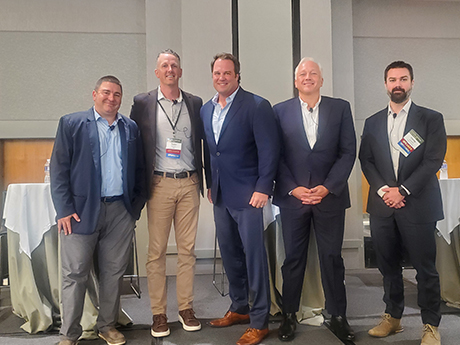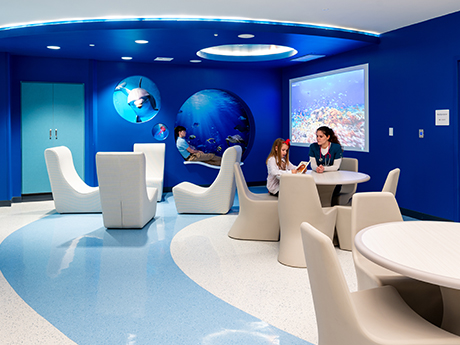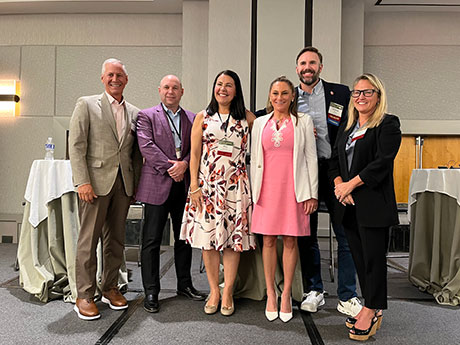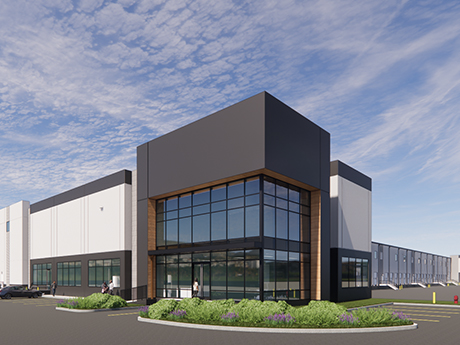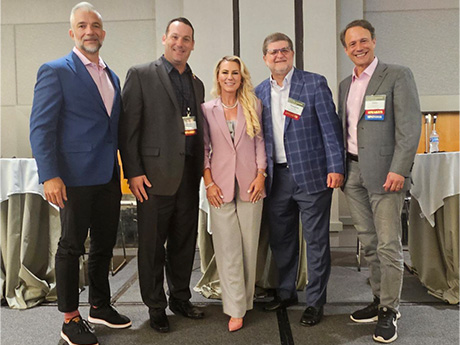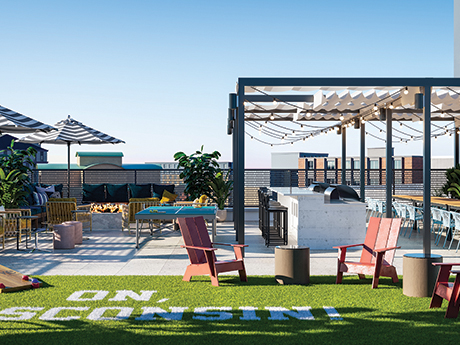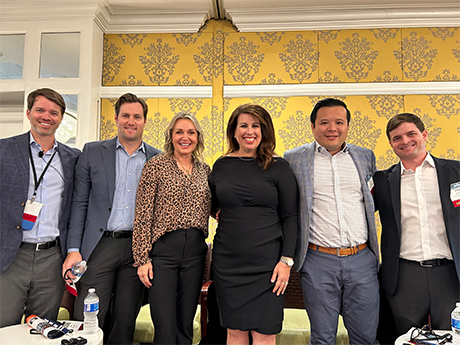By Taylor Williams ATLANTA — Seniors housing has long been established as a viable property type within the spectrum of commercial real estate investment, and at the institutional level, major seniors housing owners oftentimes happen to be major healthcare owners as well. The pairing is only logical. Seniors tend to require disproportionate amounts of healthcare resources, which is why ideal sites for their residential facilities tend to have proximity to hospitals. It also explains why the staffers who make these facilities run often have medical training backgrounds. Therefore, to continue to evolve as an asset class and investment proposition, it follows that seniors housing owners must, from top to bottom, deepen their embrace of healthcare technologies and operating philosophies within their properties. Editor’s note: InterFace Conference Group, a division of France Media Inc., produces networking and educational conferences for commercial real estate executives. To sign up for email announcements about specific events, visit www.interfaceconferencegroup.com/subscribe. At the InterFace Seniors Housing Southeast conference in Atlanta in late August, several panelists representing prominent owner-operators encouraged a crowd of 400-plus attendees at the Westin Buckhead Hotel to do just that. Incorporating both tangible and intangible features of pure-play healthcare properties and operations reflects an …
Features
Technology Can Complement — But Never Replace — The Human Touch in Seniors Housing Communities, Say InterFace Panelists
by John Nelson
ATLANTA — Though the older population is often seen as removed from modern technology, tech products offer great promise to the seniors housing sector. Participants in the “Technology Revolution: Enhancing Resident Care and Operational Cost Effectiveness” panel at the InterFace Seniors Housing Southeast conference (held recently in Atlanta) all agreed on this point. Importantly though, the panel — which was moderated by Mark Petty, vice president of corporate accounts with ICON — also highlighted the fact that seniors housing is an industry rooted in human interaction. Given this fact, the panelists concluded that technology can complement and enhance, but never replace, the human touch. Editor’s note: InterFace Conference Group, a division of France Media Inc., produces networking and educational conferences for commercial real estate executives. To sign up for email announcements about specific events, visit www.interfaceconferencegroup.com/subscribe. Three Questions A strategic approach in the purchase and application of technology within seniors housing communities is paramount, pointed out Joe Jasmon, CEO and managing partner of American Healthcare Management Group. In addition to being highly helpful, the products offered by tech companies can be costly. “To have tech just to have tech is really a waste of time, effort and money,” asserted Jasmon. …
By Ari Rastegar, founder, CEO, Rastegar Property Co. Artificial Intelligence (AI) is no longer just the future — it’s the present. This technology is reshaping industries across the globe, from virtual assistants to autonomous vehicles and beyond. As AI becomes a dominant force, it’s critical that industries, particularly real estate, embrace this transformative technology to unlock unprecedented value. The real estate industry has been historically slow to adopt cutting-edge technologies, but this delay presents a golden opportunity. Those of us who invest now, who see the future coming and align ourselves with it, stand to revolutionize the industry. At Rastegar, we’ve long been focused on identifying trends before they emerge. We see AI as one of the most powerful tools in our arsenal, both domestically and internationally. It’s not just about improving efficiencies or enhancing the customer experience — it’s about rethinking the very way capital is raised, assets are selected and operations are managed. This is a new era, and we are stepping into it full throttle. Rastegar has recently appointed its first chief technology officer, a move that underscores our commitment to building custom, in-house AI solutions tailored to our vision of the future. The level of technological …
As a bridge lender across the full spectrum of seniors housing, Live Oak Bank has been able to capitalize on the limited liquidity in today’s market that has resulted in stalled transactions and refinancing challenges in this niche property sector. “Trust me, I have a certain advantage right now with the lack of lenders [active in the space], and I enjoy that because it enables me to be very strategic on relationships and the people that I choose to partner with and grow. But having liquidity back in our market is necessary for a healthy seniors sector,” believes Chad Borst, managing director of seniors housing at Live Oak Bank, headquartered in Wilmington, North Carolina. Editor’s note: InterFace Conference Group, a division of France Media Inc., produces networking and educational conferences for commercial real estate executives. To sign up for email announcements about specific events, visit www.interfaceconferencegroup.com/subscribe. Borst would like to see banks that moved to the sidelines in recent years due to the disruption in the capital markets return to the playing field. “I want the permanent financing market to open up more broadly. I want other banks to come back because it will help the overall health of our …
By Erik Higgins and Tiffany Kalloor, associate principals at Hoefer Welker While providing top-quality patient care can never be replaced as a priority, the design of healthcare facilities is a major factor in creating an overall environment that supports healing and well-being for patients and staff. In the ever-evolving landscape of healthcare real estate design, new trends continue to reshape how providers utilize facilities. This is particularly true for behavioral healthcare spaces. It is crucial to have architecture, engineering and construction (AEC) partners who share a commitment to empathetic and flexible design, incorporating diverse viewpoints and staying current with changing technology. Healthcare organizations expect design plans that are at the forefront of innovation and that extend beyond functionality — designs that benefit the holistic patient experience. With bespoke patient spaces, designated areas for employee wellness, the integration of biophilic design and state-of-the-art technology, the behavioral health design landscape is rapidly adapting. This requires balancing escalating construction and renovation costs and amenities no longer considered optional. Recently, we’ve seen the following features successfully incorporated into designs of healthcare facilities: Personalizing Patient Experiences Behavioral healthcare facilities have become committed to providing options for patients to personalize their rooms. Whether it’s lighting, art or …
ATLANTA — Staffing, particularly at the regional director level, kicked off the discussion at the “Best in Class Operators’ Blueprints for Success in a Challenging Market” panel at the 11th annual InterFace Seniors Housing Southeast conference on Wednesday, Aug. 28 in Atlanta. Pilar Carvajal, founder and CEO of Innovation Senior Living, said her firm is focused on developing from within and rewarding those who have worked hard for the company. “We are keeping a very close focus internally. We think that’s where we will find our talent as we grow,” said Carvajal. Examples include developing the resident care director into an executive director or the executive director into a senior executive director who oversees more than one property. Joining Carvajal on the panel were Lindsey Hacker, executive vice president and CFO of Distinctive Living; Kristin Kutac Ward, co-CEO of AgeWell Solvere Living; Lou Maranto, senior vice president of sales for Discovery Senior Living; and Todd Filippone, president of SRI Management. Charles Mann, chief sales officer and co-founder of Accushield, a provider of security and entry management software for the industry, moderated the discussion. InterFace Conference Group, a division of France Media, hosted the event at the Westin Buckhead. “We’re constantly looking …
By Taylor Williams The meteoric rise of industrial real estate over the past decade will forever stand as one of the remarkable growth stories in the annals of commercial real estate, a quasi-rags-to-riches tale of an asset class that has become a preferred use for highly valuable sites and penetrated the portfolios of institutional-grade investors around the country. But after surging to all-time highs in the immediate post-COVID era, industrial rents have moderated in most major markets. Slowing rent growth has coincided almost perfectly with interest rate hikes, all while land and construction costs have continued to do what they always do: go up. For these reasons, industrial developers, who still overwhelmingly build on spec, tend to need a little more help these days than they did in recent years. Or in some cases, these developers may be perfectly well-capitalized to acquire land, secure financing and deliver buildings, but simply aren’t motivated to do so in the current financial environment. Enter incentives — of both the tangible and intangible variety — as the missing link that could mean the difference between a project being shelved or delayed and being executed. Incentives can take many forms, from tax breaks granted by …
Careful Balance of Business Fundamentals, Quality Care Is Key to Seniors Housing Success, Say InterFace Panelists
by John Nelson
By John Nelson Seniors housing is a sector that has a long track record of carefully balancing care for its residents with the fundamentals of real estate, namely the return on investment in the form of monthly rental rates. Equity and debt partners have appreciated the sector as an investment vehicle for decades, but are now fully grasping how important operators are to realizing those gains. This was the topic of discussion among the “power panel” of executives at InterFace Seniors Southeast, an annual conference that was held at Westin Buckhead Atlanta on Wednesday, Aug. 28. Panelists were asked by moderator John Lariccia, CEO and founder of WelcomeHome Software, to summarize the state of the seniors housing industry in a single word. Doug Schiffer, president and chief operating officer of Allegro Senior Living, selected “encouraged” as the best term to describe the current mood of the sector. “The encouragement comes into the fact that both versions of capital, whether it was equity or debt, have actually recognized now the importance of the operator,” said Schiffer. “For quite some time, it was about the importance of the real estate and how the buildings were designed, and then ‘we’ll go find an …
High interest rates and stubborn inflation have somewhat hindered the days of excess — for both student housing developers and their residents. Yet, the need for more student housing units continues. Student accommodations booking platform Amber notes that the 175 largest U.S. universities can only provide housing for 22 percent of their undergraduates. New deliveries have also slowed, with the average annual number of new bed deliveries coming in at 33,700 between 2021 and 2023. The average number of beds delivered annually between 2013 and 2020 was 56,200, according to JLL Capital Markets. This has led some colleges and universities to get creative when housing is scarce and development is not only cost consuming, but time consuming. “In some cases, universities lease all or a portion of our neighboring communities when they need more housing inventory than presently available on campus,” says James Wilhelm, chief development officer at American Campus Communities (ACC). “In addition, some universities have approached us to purchase our off-campus assets to grow and expand their upper-division student housing offerings. The purchase of our communities is generally fueled by a desire to add beds on an expedited timeline at a fraction of the cost of new construction.” …
Build-to-RentConference CoverageFeaturesMultifamilyNorth CarolinaSingle-Family RentalSouth CarolinaSoutheastSoutheast Feature Archive
Build-to-Rent Sector Remains in a Sweet Spot, Say InterFace Panelists
by John Nelson
CHARLOTTE, N.C. — Build-to-rent (BTR), or purpose-built neighborhoods of single-family rental homes, has been an emerging subsector of the multifamily continuum the past several years. The housing type fills a niche for renters as it offers more living space and privacy than typical apartments, but is more affordable and amenitized than for-sale homes. The BTR sector began its ascent during the early years of the COVID-19 pandemic when a confluence of factors —the rise in work-from-home and hybrid work schedules, an increase in household formation of younger millennials, the desirability of more private space including garages and backyards — led to a sharp increase in demand for single-family rental (SFR) homes. Underpinning the increased demand for BTR living is the unaffordability of homeownership for a large swath of Americans. As of mid-year, home prices are now 47 percent higher than they were in early 2020, according to Harvard’s Joint Center for Housing Studies. Home insurance premiums have also risen aggressively in the recent past — up 21 percent between 2022 and 2023, according to the study. Meanwhile, mortgage payments are increasingly untenable as interest rates have also risen dramatically in recent years. For these reasons, institutional investors are actively participating …


